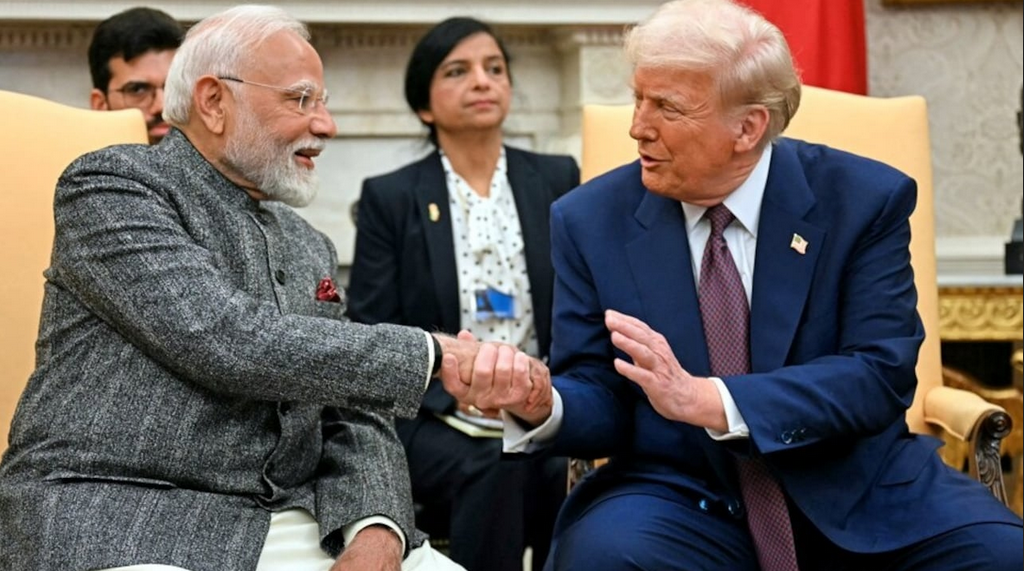
US President Donald Trump’s announcement Wednesday of a 26 per cent reciprocal tariff on India could present some challenges in the short-term, but it might not be all that bad. There are at least three silver linings:
Comparative advantage
One, that tariffs work on a comparative basis, and while the levy imposed by one country on another is important, what is even more vital is the tariff rate applied on the latter’s competitors. So, while the tariff slapped by the US on India is consequential, what could be more important is the tariff rate proposed on say China, Bangladesh or Vietnam. As per the announcement from the White House, the US will impose a 10 per cent base tariff on all countries from April 5, and an individualised reciprocal higher tariff from April 9 on countries with which Washington, DC has the largest trade deficits.
In India’s case, after the first phase of the universal 10 per cent tariff takes effect on April 5, a 16 per cent tariff will kick in after April 9, bringing the total duty to 26 per cent. This rate of 26 per cent on India is much lower than the 34 per cent imposed on China, 46 per cent on Vietnam, 37 per cent on Bangladesh and 36 per cent on Thailand, all of which are competitors for Indian exporters while accessing the American market in some commodity segment or the other. Tariffs on India are also lower than those on other Asian competitors, including the 36 per cent proposed on Thailand and 32 per cent on Indonesia.
While the tariffs imposed on India were higher than the 24 per cent duty on Japan, 25 per cent on South Korea, 24 per cent on Malaysia, 20 per cent on the European Union, or the 10 per cent on the UK, it is only Malaysia that really competes with India in some sectors and most of these developed nations with lower tariffs are not generally competing with India in the same product categories. In any case, a 10 per cent base rate is applicable in case of all countries, and so the effective incidence is 16 per cent for India.
So, New Delhi could actually be better off in comparative terms. In the case of sectors such as textiles and garments, for instance, India could now have a comparative advantage of sorts while accessing the American market in comparison to key competitors such as Vietnam, Bangladesh and China. This could be of the kind of advantage that Bangladesh had while accessing the European Union market, where it had zero duty access on account of its LDC status, while countries such as India had to pay a duty.
Potential to negotiate
The second positive for India is that the Trump administration has indicated that if a country were to address American trade concerns, these reciprocal duties could be potentially revised or reversed. India and the US are already negotiating a bilateral trade agreement, with both sides aiming to finalise the first phase of the deal by October this year, and most of the discussions from India’s side would focus on diluting some of the adverse effects of these tariffs.
Also, since a crucial USTR (United States Trade Representative) report had noted just before the reciprocal tariff announcement that India’s average Most-Favored-Nation (MFN) applied tariff rate was 17 per cent in 2023, which “was the highest of any major world economy, with an average applied tariff rate of 13.5 per cent for non-agricultural goods and 39 per cent for agricultural goods, it was only a question of time when Washington’s fire got directed at New Delhi. In that sense, India has gotten off quite lightly, and that marks a diplomatic win for the Indian government.
Reaction to American tariffs
Lastly, how the tariff situation progresses from here on would depend on how America’s trade partners react to these tariffs on April 2. Countries or groupings that have traditionally had a lower tariff regime, such as the EU or Japan or Australia, or even China, would be tempted to retaliate. That could result in an escalatory spiral. In India’s case, that might not be the case, since New Delhi has gotten off lightly, and has scope to get these tariffs lowered with the proposed bilateral deal.
Story continues below this ad
Any tariff war would be self-defeating with a clear cost to both sides, and that is best avoided. It might, instead, be prudent for India to focus on getting concessions by pruning its own high tariffs, which is vital for the country’s manufacturing sector to regain competitiveness. America’s tariffs also present an opportunity for India to negotiate with its other trade partners to bring down the barriers that exist currently to trade, tariff barriers and an increasingly large number of arbitrary non-tariff barriers that India has resorted to in recent months.







